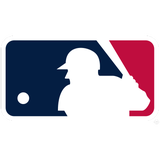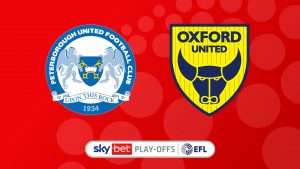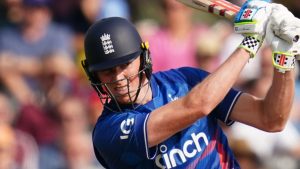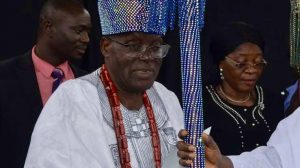Juan Soto trade: Why Nationals dealt a franchise icon


By Jordan Shusterman
FOX Sports MLB Writer
It actually happened. Juan Soto, already with a career’s worth of accomplishments to his name but still just 23 years old, was traded to the San Diego Padres on Deadline Day.
The trade rumors had swirled since mid-July, when Soto turned down a 15-year, $440 million offer from the Nationals that would have been the largest contract in baseball history.
Washington then put the face of the franchise on the market and on Tuesday reeled in a package that reportedly includes left-hand pitcher MacKenzie Gore, shortstop C.J. Abrams, minor-league outfielders Robert Hassell III and James Wood, and minor-league right-hander Jarlin Susana.
Before we turn the page to the next chapter of Soto’s career, it feels appropriate to look back at how the Nats even arrived at this precarious juncture in the first place. After all, it wasn’t that long ago that Soto was raising the Commissioner’s Trophy in a parade down Constitution Avenue celebrating the franchise’s first World Series title.
That’s probably the right place to start.
That 2019 season was a fairytale. Famously 19-31 on May 23, the Nationals clawed their way back into the postseason picture, finishing with a remarkable 93 wins and the right to host the NL wild-card game against the Brewers. Down two runs in the eighth inning against fearsome flamethrower Josh Hader, a 20-year-old Soto stepped to the plate with the bases loaded, unfazed by the moment, and delivered the hit that would spark one of the great postseason runs in baseball history:
The rest of the month was something of a blur. A tight five-game series against the Dodgers won by veteran Howie Kendrick on an extra-inning grand slam in Game 5. Utter domination of St. Louis in a sweep of the NLCS. And an epic seven-game clash with Houston featuring multiple legendary homers from Soto and another iconic Kendrick blast off the right-field foul pole in Game 7.
Then Daniel Hudson struck out Michael Brantley and threw his glove to the sky in celebration — the Washington Nationals were World Series champions for the very first time.
Less than three years later, this same franchise couldn’t be further from another title. At 35-69, the Nationals have the worst record in baseball. Their minus-172 run differential is also the worst in baseball, thanks in large part to a pitching staff that ranks 30th in ERA, FIP, WHIP, fWAR and homers allowed.
The offense, despite Soto and a huge season from Josh Bell (who was included in the Soto deal to the Padres), is also near the bottom in most categories, including baserunning. To top it all off, the defense is also one of the worst in the league, ranking last in Defensive Runs Saved and Outs Above Average.
So, how does a team go from first to worst so quickly? It’s not entirely unprecedented to see teams that win it all revert back to the bottom of the standings, but this has felt like an especially sharp fall.
One obvious place to start: Who is even left from that championship squad?
Of the 45 players to appear in a game for the 2022 Nationals, just eight of them played for the 2019 Nationals. Victor Robles is now the only position player remaining. The five pitchers left are Stephen Strasburg, Patrick Corbin, Anibal Sanchez, Erick Fedde and Tanner Rainey. A sixth, Austin Voth, was DFA’d and claimed by the Orioles in June.
(Joe Ross, who made the emergency spot start in place of Max Scherzer in Game 5 of the 2019 World Series, also remains in the organization, but an elbow injury has kept him out all season.)
Beyond Soto, three of those other holdovers go a long way in explaining the team’s drastic downfall over the past three seasons.
Robles’ prospect status actually outpaced Soto’s. A few years ago, Robles appeared to boast a much greater array of tools — elite speed, defense, throwing arm — and impressive minor-league statistics to boot. Early on, all Soto had was the bat, and before we knew his bat was going to be special it was easy to underestimate him.
Robles finished sixth in NL Rookie of the Year voting with a strong full season as the starting center fielder on a championship team.
Robles in 2019: .255/.326/.419 with 33 doubles, 17 HRs, 28 steals in 617 PA
Robles from 2020-2022: .216/.299/.308 with 33 doubles, 9 HRs, 24 steals in 826 PA
The bat simply never came along, and now he strictly looks like an outfield defensive specialist à la Juan Lagares rather than a superstar running mate alongside Soto, who ultimately blossomed in a big way. There’s a reason the hit tool is the most important in a prospect’s toolbox, and Robles is a cautionary tale of that reality.
Corbin received down-ballot Cy Young votes in both 2018 and 2019, posting a 3.20 ERA over 402 IPs with 484 strikeouts. He earned the six-year, $140 million free-agent deal he signed with Washington in February 2018, and he delivered on it immediately during the 2019 World Series run, which should not be ignored.
Since then, however, the only thing Corbin has been is durable — the effectiveness has completely escaped him. His 5.84 ERA since the start of 2020 ranks 42nd out of the 42 pitchers that have thrown at least 300 innings over that span, and he has shown no signs of turning it around.
Was Corbin’s one good year during the championship run worth the contract as a whole? Probably. But his sudden decline has been a challenging one to make sense of, and his contract has reached full albatross status.
And then there’s Strasburg, whose big-league debut in 2010 electrified D.C. like few others in any city in recent MLB history. The seven-year, $245 million deal he signed with the Nationals coming off his epic World Series MVP performance felt as much like an expensive “thank you” as it did an investment in his success moving forward. Indeed, he has posted a 6.89 ERA in just eight starts across three years since signing the mega-deal in December 2019. It has been very difficult to watch.
Had the Nationals signed Anthony Rendon that winter instead, they’d likely still be in a fairly similar situation, as Rendon has also dealt with significant injuries since signing the same deal with the Angels. But contracts of that magnitude are never as burdensome for hitters as they are for pitchers like Strasburg, who clearly cannot be counted on any time soon despite his deal running through 2026 for another $140 million after this year.
The decline and disappointment of these three key championship holdovers is amplified further when considering that Washington’s farm system has failed so significantly to produce any sort of supporting pieces around them.
Though the Nationals have been in win-now mode ever since Bryce Harper made his MLB debut in 2012, their success has been built largely around veteran acquisitions via trade or free agency. Through a combination of trades, poor drafting and lackluster player development, the farm system has never been much of a strength under GM Mike Rizzo.
Unlike a team such as the Dodgers, who have consistently boasted one of the best farm systems in baseball despite never picking at the top of the draft and making a boatload of blockbuster trades along the way, the Nationals have struggled mightily to produce consistent reinforcements from its minor-league ranks. Instead, Rizzo has opted to bolster the roster around its small handful of homegrown stars such as Soto, Strasburg and Rendon.
Take a look at Baseball America’s top 30 Nationals prospects list heading into the 2019 season. Robles, who was still rookie-eligible entering that season, tops the list. Infielder Carter Kieboom, who slots in at No. 2, has dealt with injuries (he underwent Tommy John surgery earlier this year) and has struggled immensely in limited MLB reps. No. 3 is Luis Garcia, who looks like a useful, if limited, starting infielder.
Of the other 27 prospects, only four have appeared in the big leagues for the Nationals this season: No. 16 Tres Barrera (backup catcher at best), No. 21 Jackson Tetreault (depth starter), No. 24 Tanner Rainey (volatile reliever) and No. 25 Joan Adon (starter with good stuff currently having one of the worst seasons a starting pitcher could possibly have).
The severe lack of help from the farm system is part of what necessitated the trade of No. 5 Wil Crowe to Pittsburgh for Josh Bell and the signing of free agent Kyle Schwarber heading into 2021, although neither move ended up producing a winning team.
Though the prospect depth has failed to coalesce around Soto, finding and developing a player like him on its own is still a dream outcome for any organization. To have him carry the team to a title as a 20-year-old alongside franchise icons like Strasburg and Ryan Zimmerman? It was the perfect World Series arc.
Yet for Soto, it’s also a tremendously unusual arc. Recently, we’ve become much more familiar with veterans such as Freddie Freeman or Clayton Kershaw finally reaching the mountaintop with the team that drafted or signed them so many years ago. Soto’s own former teammate, Zimmerman, fit this description as well.
The only recent parallel of a player such as Soto winning it all so young and then being dealt is also the only recent parallel of a player as good as Soto and being traded — Miguel Cabrera, who won it all with the Marlins in 2003 as a 20-year-old and was then shipped off in a mega-deal to Detroit four years later, where he has been ever since. Could Soto’s next stop be his last like Miggy’s has turned out to be? It remains to be seen.
Still, Cabrera’s career is also a sober reminder of how precious championships can be. Cabrera has accomplished plenty in Detroit, but has not added another World Series ring to the one he won when he was just 20. That Soto was already able to even achieve the pinnacle of the sport should not be underappreciated, no matter how much postseason success is in his future, in Washington or elsewhere.
In another timeline, the 2019 Nationals never recover from their awful first two months and miss the postseason entirely. In others, they reach October but ultimately bow out of the postseason at one of the various points along the way when their improbable ride seemed sure to be coming to an end. Those alternate universes might eventually have led us to this same position — an organization at a challenging crossroads — albeit one without the feel-good fairytale.
Instead of coasting on the nostalgia of a championship, there would be added lamentation over the Nationals failing to build a winner around a generational talent such as Soto. It’s the kind of discourse we have surrounding players like Mike Trout in Anaheim. Instead, Nationals fans will always have the ‘19 title, and that’s pretty damn cool. Flags fly forever, after all.
With Soto officially out the door, a ton is about to change in Washington. GM Rizzo and manager Davey Martinez have reportedly had their options picked up for next season, but with the Lerner Family in the process of selling the franchise, significant change in the front office and field staff is coming in the near future. Some wondered if the new ownership group (still to be determined) would have the opportunity to attempt to keep Soto in the nation’s capital long-term with an extension offer this winter. But that new ownership group will never have the chance.
Soto’s time in D.C. has come to an end, a harsh reality for Nationals fans and baseball fans in general. Washington is where he made his name, on the biggest stage in 2019 and in every subsequent at-bat in the years following as his legend continued to grow.
No matter how his career unfolds from here, we’ll always know where the story of Juan Soto began. And like the 2019 title, you can never take that away.
Jordan Shusterman is half of @CespedesBBQ and a baseball writer for FOX Sports. He lives in D.C. but is a huge Seattle Mariners fan and loves watching the KBO, which means he doesn’t get a lot of sleep. You can follow him on Twitter @j_shusterman_.
Get more from Major League Baseball Follow your favorites to get information about games, news and more.






